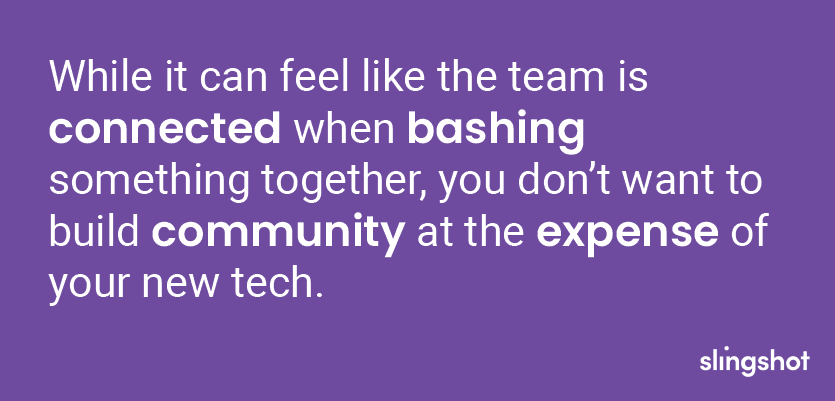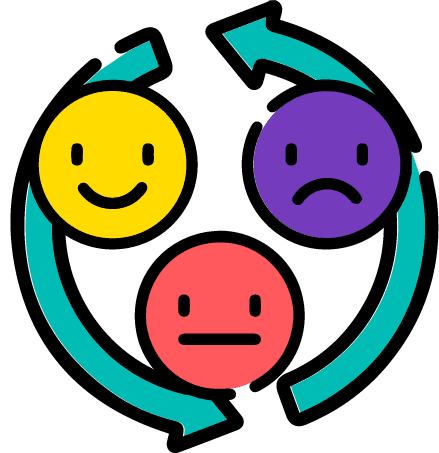In today’s fast-changing digital world, tech teams must float like a butterfly and sting like a bee: they must be quick, adaptable, and always ahead of the game to succeed.
The key to achieving this is embracing a culture of continuous learning: an ongoing pursuit of knowledge that keeps you updated on best practices and newer technologies.
Today, we’ll dive into the benefits, challenges, and practical steps of building a culture around continuous learning.
Summary
- A learning culture in tech teams leads to adaptability to tech advancements, innovation, better problem-solving skills, higher employee satisfaction and retention, and improved team synergy.
- Challenges include time constraints, resistance to change, and creating a supportive learning environment.
- Continuous learning involves setting goals, incorporating learning into workflows, creating feedback loops, adapting based on experiences, and fostering accountability.
Benefits of a Learning Culture for Tech Teams
Continuous learning is crucial for staying ahead and empowering your tech team to embrace new tools and methods. It’s a personal pursuit and a strategic move that fuels and keeps employees happy. But what exactly are you getting out of it? Good question, let’s find out!
Enhanced Adaptability to Technological Advancements
Technology is constantly evolving. It’s crucial to stay on top of these changes; the key to doing so is the ability to adapt quickly. To foster a culture of quick adaptation, it’s essential to create a space where teams are encouraged to explore new tools, programming languages, and innovative ways of doing things.
This enables teams to stay ahead of the curve and remain competitive in our rapidly changing landscape. By embracing a culture of learning, teams can leverage new technologies to their advantage, enhance their skills, and improve their overall performance.
Increased Innovation and Problem-Solving Abilities
Continuous learning is essential not only for personal growth but also for professional development. Investing their time and effort in education equips them with the necessary skills and knowledge to think analytically and creatively. This, in turn, helps them develop innovative solutions to challenging problems for your business.
When organizations promote a culture of experimentation and encourage new ways of thinking, it fosters innovation and creativity. As a result, employees feel empowered to take risks and experiment with new ideas, leading to the development of breakthrough solutions.

Improved Employee Satisfaction and Retention
Investing in the growth of employees is more than just a fringe benefit; it’s a powerful way to show that you value your workforce and their work. In return, employees feel motivated and supported, boosting morale.
This positive culture shift results in happier and more satisfied employees who are more loyal to your organization. When employees feel valued and supported, they’re less likely to leave their jobs, which leads to lower turnover rates for you. Investing in the knowledge growth of employees is a win-win situation for both the employee and your company.
Enhanced Team Collaboration and Synergy
Fostering a culture of continuous learning within an organization promotes knowledge-sharing and collaboration among team members. Encouraging people to share their expertise and work creates an environment that breaks down communication barriers and cultivates a sense of teamwork.
This, in turn, leads to forming a robust and collaborative team where each member’s skills and strengths complement each other, allowing for the collective achievement of goals and objectives.
Overcoming Challenges in Implementing Continuous Learning
Sounds great, right? Innovation, Retention, and Collaboration, oh my! But it’s not all smooth sailing; you can’t change a culture overnight. Let’s look at three things to remember when implementing continuous learning.
Addressing Time Constraints and Workload Pressures
Finding time for learning when you’re super busy with project deadlines can be challenging. But it’s essential to keep your team learning and updating their skills, especially in fields like tech that are constantly changing.
If your team needs help fitting it all in, you could try setting aside dedicated learning hours for teammates or rearranging their workday to make time for learning. That way, your employees can keep learning new things and finish their projects on time.
Overcoming Resistance to Change or Traditional Mindsets
It’s normal for people to resist changes, especially if they’re unprepared for them. However, a good leader like you understands this and tries to make the transition as smooth as possible. That happens via openly communicating with your team to provide all the information about changes and highlighting the benefits of learning new things. By doing so, you can instill a sense of confidence and trust in your team, ultimately leading to a more successful outcome.

You should also make yourself available to answer any questions or concerns your team may have, as that can help alleviate the doubts or fears they’re experiencing. Ultimately, being a leader who can successfully navigate through changes can set an excellent example for your team, showing them that growth and innovation are essential to success.
Strategies for Creating a Supportive Learning Environment
To foster a culture that values and prioritizes learning, providing people with access to a wide range of learning resources (like books, courses, and workshops) is vital. When people have access to experienced mentors who can guide them through challenges, they’re more likely to stay motivated and engaged in their learning.
Recognizing and rewarding individuals who demonstrate a genuine commitment to learning is critical to long-term success. This reinforces the importance of ongoing education and encourages others to follow suit.
Implementing Continuous Learning: Practical Steps for Tech Teams
We’ve seen the good, you’ve overcome the bad, and now it’s time to get dirty! We could end the blog now, but why not give you some steps to get this continuous learning ball rolling?
Establishing Learning Goals and Metrics for Success
When you establish well-defined objectives for learning, you can ensure that everyone involved is aligned and working towards the same goals. Doing so creates a clear path towards success, leaving little room for confusion or ambiguity.
When you have measurable parameters to assess progress, you can easily track and monitor your progress and determine how effective the learning process has been. This can help identify areas that need improvement and make informed decisions to optimize the learning experience.
Incorporating Learning into Workflows and Projects
Incorporating learning into your daily tasks is integral to your team’s routine. When individuals share their knowledge and expertise with their teammates, it helps them learn new skills, gain different perspectives, and encourage their colleagues to do the same.
This fosters a culture of ongoing learning, helps build stronger relationships, and promotes regular collaboration within the team. By making learning a natural part of your daily work, you can continuously improve your skills and knowledge while also contributing to the growth and development of your team.

Feedback Loops and Adapting Based on Experiences
Success in learning comes when the goal is long-term improvement. To ensure that your team is doing more than a one-and-done approach, you should encourage them to seek feedback on their learning strategies and adapt them based on their experiences.
This can involve analyzing data to identify areas for improvement, experimenting with new approaches, and soliciting feedback from team members and other stakeholders. By constantly refining their learning strategies, your team can stay ahead of the curve and achieve their goals more effectively.
Nurturing a Culture of Accountability and Ownership
When individuals feel in control of their education and training journey, they’re more likely to take ownership of it and become responsible for their actions. This sense of personal responsibility can significantly impact a team’s overall success, fostering a culture of accountability and collaboration.
By taking an active role in their learning, team members are better equipped to identify areas where they need to improve and proactively seek resources and support to achieve their goals. This benefits the individual and contributes to the team’s growth and development.
Conclusion: Embracing a Future of Constant Evolution
Continuous learning isn’t merely a strategy; it’s a mindset that propels tech teams towards an ever-evolving future. It’s not just about keeping up but staying ahead. The transformative power of a learning culture cannot be overstated.
As technology continues to reshape industries, the call to action for tech teams is clear: prioritize continuous learning. Embrace it as a cornerstone of your team’s ethos, and watch as innovation, adaptability, and collective success soar to new heights. The journey might be challenging, but the rewards are boundless. It’s time to unleash the full potential of your tech team through the power of continuous learning!
Want more team-based help?

Written by: Savannah
Savannah is our one-woman marketing department. She posts, writes, and creates all things Slingshot. While she may not be making software for you, she does have a minor in Computer Information Systems. We’d call her the opposite of a procrastinator: she can’t rest until all her work is done. She loves playing her switch and meal-prepping.

Edited by: Chris
Chris has been in the technology space for over 20 years, including being Slingshot’s CIO since 2017. He specializes in lean UX design, technology leadership, and new tech with a focus on AI. He’s currently involved in several AI-focused projects within Slingshot.




